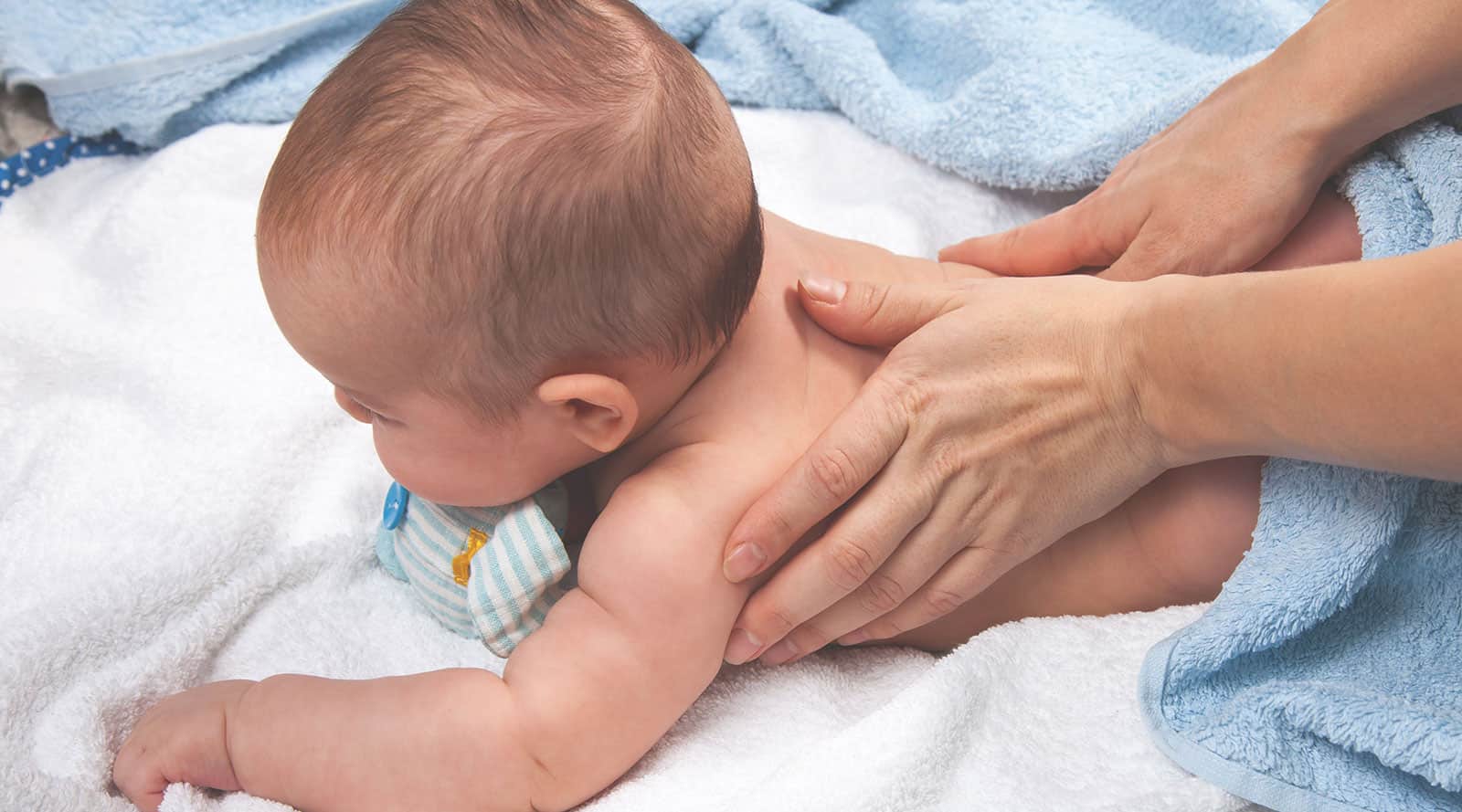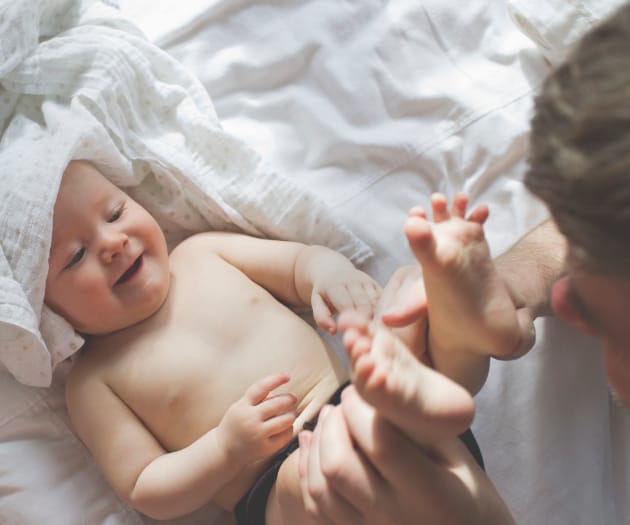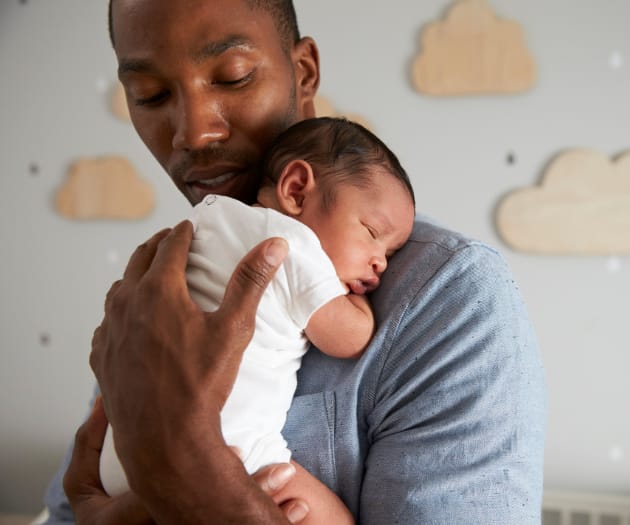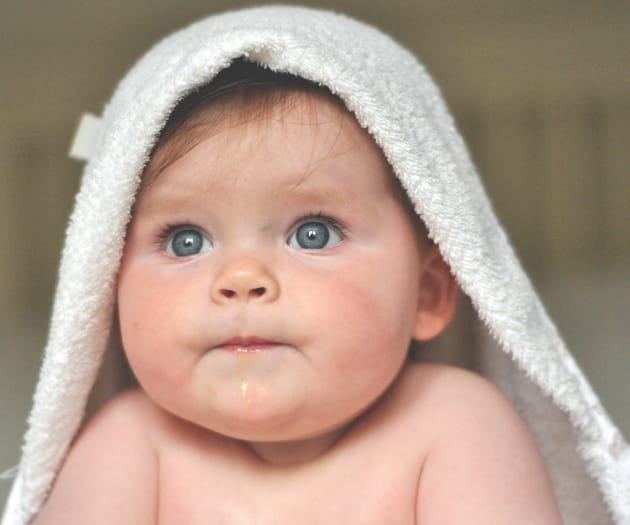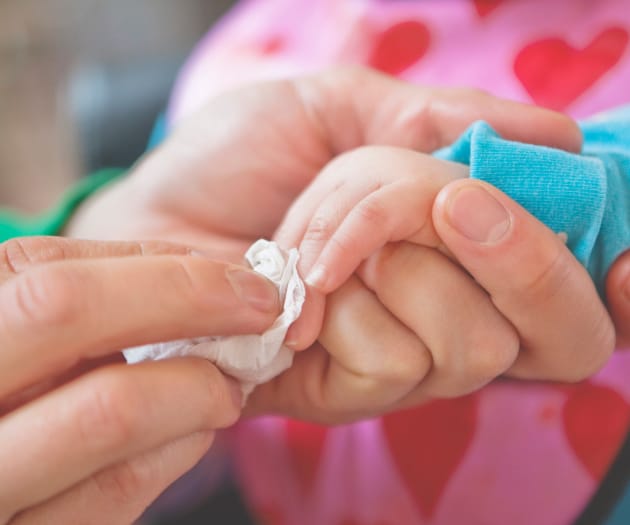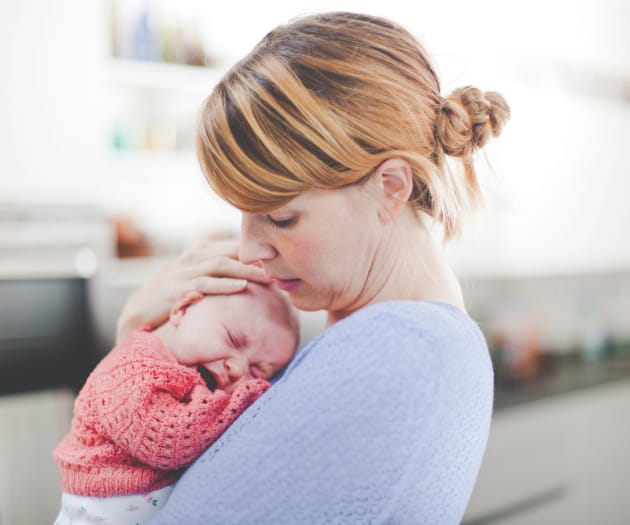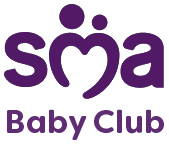Introduction
Baby massage may sound like a warm, fluffy extra but it has a surprising number of proven benefits. It can be a really important part of caring for your little one in the early weeks and months which is why there are many baby massage classes in local health centres and children’s centres. Have a look online or ask your health visitor if there’s one near you. Practising in a group environment could boost your confidence and fine tune those baby massage skills, plus it’s a great place to meet other mums.
Benefits of baby massage
- Baby massage is a lovely way of affirming your bond with baby. It can help you, your partner, and any carers have a positive interaction with them.
- Touch is a beautifully simple form of communication. Baby massage helps you feel more attuned to baby’s needs and, because you’re tapping into their moods, you’ll feel empowered too.
- It can relax baby's muscles, leading to deeper breathing which may help baby settle better and even sleep better.
- Massage raises the levels of the feel-good hormone oxytocin in both you and your baby. This helps you both feel calmer and relaxed.
- Baby massage can help ease tummy troubles like trapped wind and constipation. It may also aid healthy digestion.
- It’s a unique way of communicating that can help babies with additional needs, such as those with Down's syndrome or cerebral palsy.
Before you warm your hands up here’s a few things to consider when massaging baby:
When is the best time for baby massage?
There isn’t one. But it helps if you make massage part of a regular routine. Yes, finding a time when baby isn’t too tired, too grumpy, too full or too hungry can be a bit of a challenge. A massage after a bath or before bedtime might be a good time to try first as it will help baby wind down and be ready for sleep after the stimulation of the day.
Do I use baby massage oil?
It’s often easier to massage using oils or creams as they help your hands glide over baby’s skin. Although you can start massage from birth, bear in mind a newborn’s skin is extremely delicate so it’s best to wait until they are at least a month old before using oil or cream. Aromatherapy oils are too strong for small babies, while commercial baby massage oils and creams are often perfumed and may irritate baby’s sensitive skin. Cooking oils are also highly refined and unsuitable. Your best bet is cold-pressed oils, like Rapeseed, Grapeseed and Calendula – they’re easy to use, inexpensive and tried and tested by lots of parents. Speak with your health visitor or public health nurse for the most suitable oil to use.
Preparing to massage newborn
Pick a time when you’re not feeling rushed or tired (easier said than done, we know). Make the room quiet and peaceful with soft, low lighting. Make sure it’s warm enough for baby to be naked, 24 °C is ideal. Trim your nails so they’re short and smooth, remove your jewellery and wash your hands. To minimise disruptions during this special baby bonding time, switch your phone to silent. It’s also worth making sure the weekly shopping delivery isn’t due to arrive in the middle of this special spa treatment. Make sure you have everything to hand and do not leave baby unattended at any time.
What do I need for a baby massage?
- Any baby massage oil you might use. Speak to your health visitor or public health nurse for the most suitable oil to use
- Something soft for baby to lie on like a changing mat or the bed
- Relaxing music
- Muslins or towels to mop up any accidents
- Nappy and clothes for after massage
Keeping these things in reach keeps massage time calm and relaxing.
How to do baby massage
- Gently undress baby and lay them on their back on a towel. To avoid baby getting cold, you may want to wrap the top half with the towel while massaging their bottom half and vice versa.
- Get yourself into a comfortable position and pour a generous amount of oil into your hands. Rub your hands together so hands and oil get warm.
- It’s good to move from the feet up as this gets them used to your touch before you reach the more sensitive areas. Start by slowly and gently stroking and stretching baby’s feet and toes.
- Work your way up baby’s legs, gently stroking and lightly squeezing the muscles – remember to support ankles with one hand.
- Do the same for the arms and hands, supporting the wrists as you go.
- Finish by stroking your baby’s chest and massaging their tummy with a clockwise circular motion.
- Chat softly to baby and try to maintain eye contact. As oxytocin levels rise, you’ll both be feeling relaxed.
- Very light touches are enough, try not to rub or squeeze too hard.
- If your baby seems uncomfortable, becomes upset or falls asleep, stop massaging.
- Gently humming or singing to baby in time with your rhythmic strokes can have a very calming effect.
- Try reading your baby’s cues whilst you massage. Their face and body language will tell you if they’re enjoying it and when they’ve had enough.
Download our handy checklist for how to massage your baby.
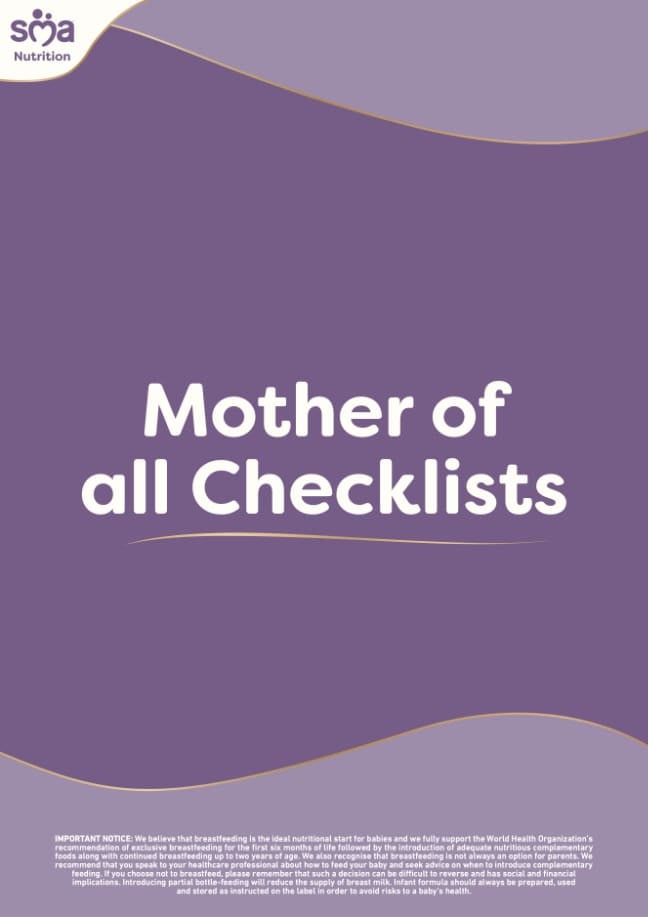
Join SMA® Baby Club to receive the Mother of all Checklists. With 63 checklists across your parenting journey from pregnancy through to toddlerhood we have you covered.



